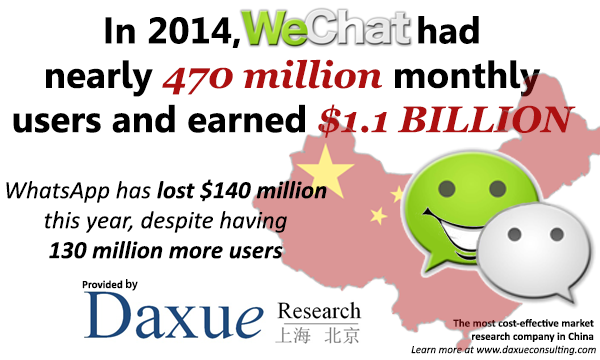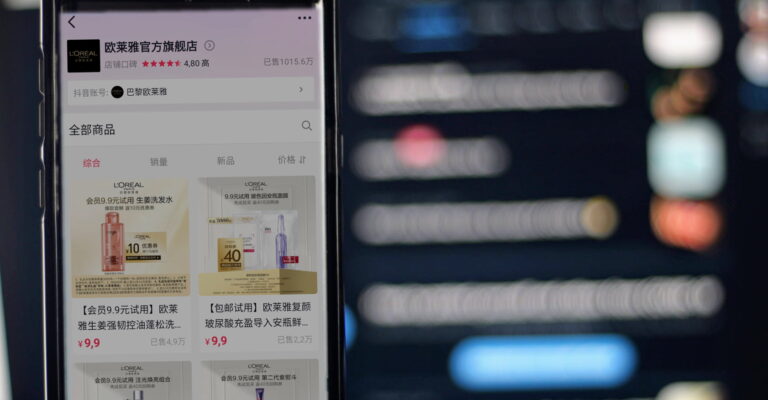Optimising Your Wechat Marketing in China
Any company with an SNS marketing strategy in China need to incorporate WeChat (known as Weixin in Chinese). WeChat has 788 million users active every month, an increasing presence overseas, and concerted efforts to spread the use of the app to countries like India and Brazil. Projections suggest it will earn roughly 6.8 billion yuan in 2014 and that’s set to rise to nearly 10 billion yuan in 2015. It ranks as the most popular messaging app in China. It is, in a phrase, greatly relevant to optimise your Wechat marketing in China
There are, however, several important things to consider before deploying such a potent tool. Here is a short guide on optimising your Wechat marketing strategy.
Why optimising your WeChat marketing?
Companies which integrate WeChat into their marketing strategy by treating it simply as a notice board or a way to spread news are failing to take advantage of the system. Weibo, the Chinese micro-blogging service, is the way to get live updates about the company to customers. WeChat’s model, however, limits companies to a single push notification per day, and have filed them away in a separate folder customers must access individually. Tencent has specifically stated that they crack down harshly on what they consider spam, and companies using WeChat as a means of firing messages out will find themselves in trouble.
In addition, the 1-to-1 nature of WeChat’s messaging service makes it harder to run than a Weibo account. Customers must be addressed individually to take advantage of the service. While this seems like a management nightmare, it actually presents a lot of options. The WeChat features are a unique opportunity for branding and marketing if treated with consideration. Companies need to ask themselves how they will treat the content.
Using WeChat features wisely
Though WeChat has ballooned into something much more, it’s still a text-based messaging service. Companies who treat this as a one-way flow of information are losing out; for one, customer service can become far more personal and streamlined, with a single rep dealing with multiple chats easily and quickly. More simply, however, it’s important to make customers feel that they are being invited to a conversation on WeChat. Market research has shown that something as simple as sending welcome messages can boost customer interaction.
WeChat is also notable for introducing a streamlined voice chat feature. Several companies have already used this to optimise their marketing with great effect. MacDonald’s, for example, encouraged users to send in audio clips of themselves rapping in a particular style, with a chance of winning a prize. Pepsi allowed users to send a voice clip to a centre which would then remix it and allow them to send it on to their friends.
The QR code scanner can also be used to creative effect, especially for O2O. As a means of connecting a company’s online and offline presence with a customer, it’s particularly effective in China, where smartphones feature centrally in public life. Events like fashion shows and concerts have allowed users to scan certain QR codes and get access to special audio and video clips featuring celebrities or behind-the-scenes extras. It could be something simpler, such as providing instant rewards for users scanning in certain locations, though research has suggested that placing the codes on fast moving objects like buses or at busy intersections can backfire; in the Shanghai metro tunnels, for example, no on has time to slow-down and scan an ad.
The apps photo and video capabilities has also been leveraged by companies successfully in the past. Sending photos is a very simple procedure; Montblanc has used it to encourage users to engage with the brands image, by emulating the Daban (big boss) aesthetic and company culture it’s promoting in China. Sending an image to a company to partake in a competition is also a very simple and easy method of attracting attention to a brand.
The new roll-outs from Tencent have also made it possible to create apps that work within WeChat. This includes games and in-app stores that allow users to engage more fluidly with the company. Companies like Burberry have offered discounts and coupons for individuals using the WeChat apps, and a promotion company created a puzzle game that rewarded users with a chance to be entered into a prize raffle.
These are only a few of the ways companies have used WeChat. As a marketing tool in China, it’s invaluable, and companies should approach it with a plan to utilize its unique characteristics. It shouldn’t be the only feature of a China marketing strategy, but optimising your Wechat marketing should certainly be in the top 5 tools.
To fully develop your brand in China, it is necessary to fully understand the characteristics of WeChat and the digital ecosystem of China. As WeChat keeps developing in the world, it will be a new power player that will crash with other companies such as Facebook or Twitter, and may very well overcome them.
Sources:
https://www.clickz.com/clickz/column/2282139/3-best-practices-for-wechat-marketing
https://walkthechat.com/make-wechat-marketing-beautiful-pb-ishangtong-com/
https://maximizesocialbusiness.com/maximize-wechat-marketing-campaigns-13888/
https://jingdaily.com/selfies-puzzles-and-quizzes-the-top-5-wechat-luxury-campaigns-of-2013/
https://www.economist.com/news/china/21594312-can-wechat-become-world-beating-app-nice-little-earner
https://adage.com/article/digital/mcdonald-s-pepsi-burberry-big-china-s-wechat/291918/








